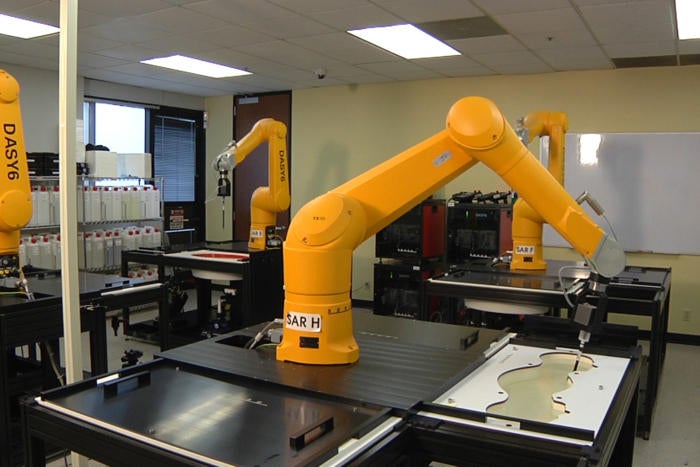Inside a smartphone safety testing lab

INSIDE A SMARTPHONE SAFETY TESTING LAB
This is the Silicon Valley base of UL, a safety testing organization, and this lab is used to measure the radio waves emanating from wireless gadgets.
The FCC sets limits in the US that manufacturers must follow and its with these robots and vats of liquid where that gets measured.
“The liquid is designed to emulate the electric properties of the human body, certain tissue parts anyway, so the conductivity and permeativity measured, and they are simulating what the human does.”
Here’s how it works.
The gadget being tested is placed under one of the moulds, which when full of liquid simulate the torso or head.
And then the robot moves in.
At the tip of the probe is a small antenna. It’s moved to different points in the liquid to measure the radio wave field.
The set up enables testers to measure the field not just at skin level but deeper in the body too. That wouldn’t be possible if a solid model was used.
The result is a 3D model
And testing a modern smartphone can take time. Up to several weeks because of all the frequency bands used by 3G and 4G networks.
And why bother with all of this?
“There is evidence that high levels of RF energy can affect tissue and cause damage to it. There is concern that low levels over time can cause damage. There’s no evidence for it, but there are concerns, so just in case let’s do the testing anyway and make sure the energy levels are low enough.”
So next time you see a new phone go on sale, remember it probably went through weeks of testing in a lab like this one.




